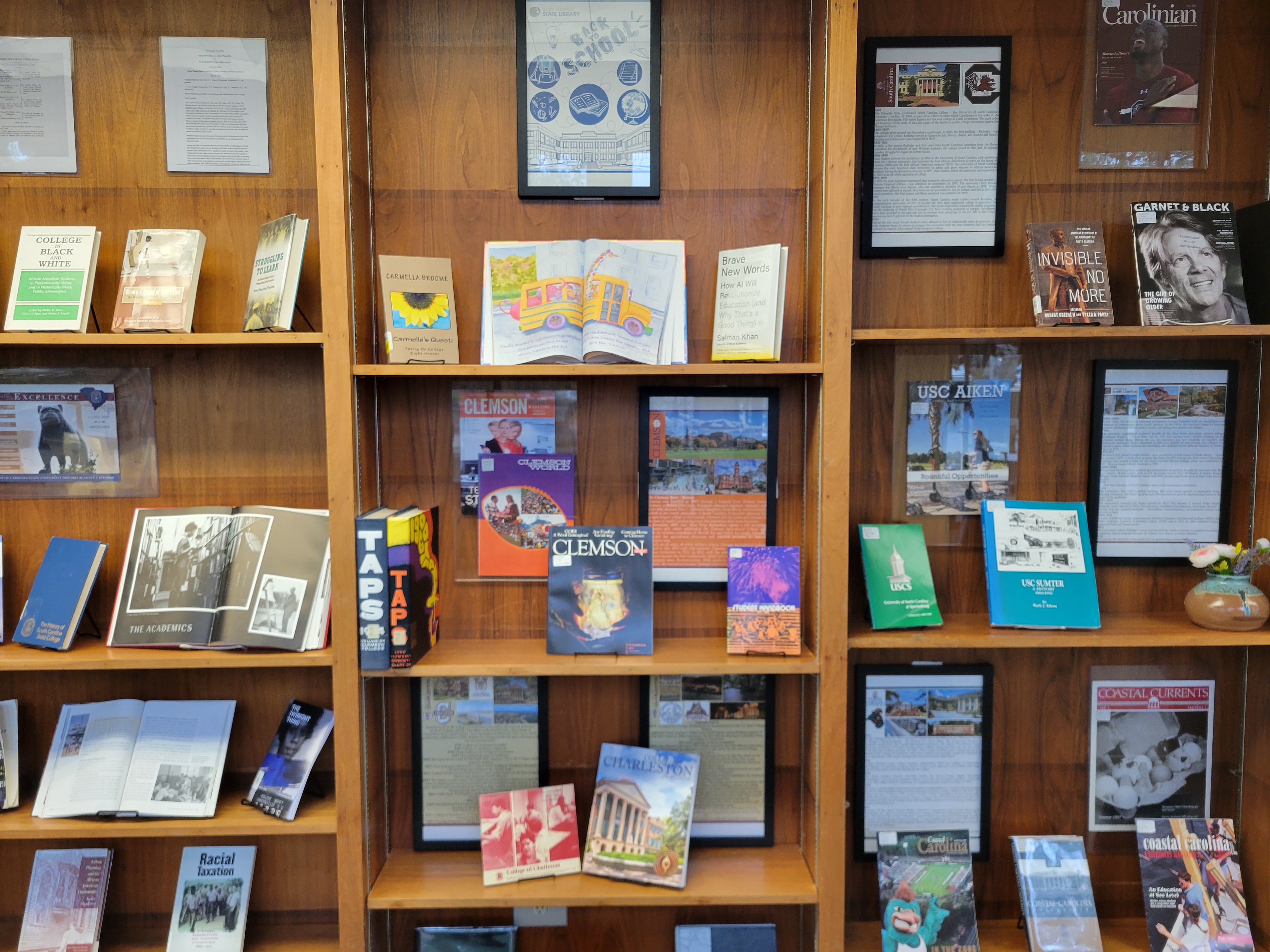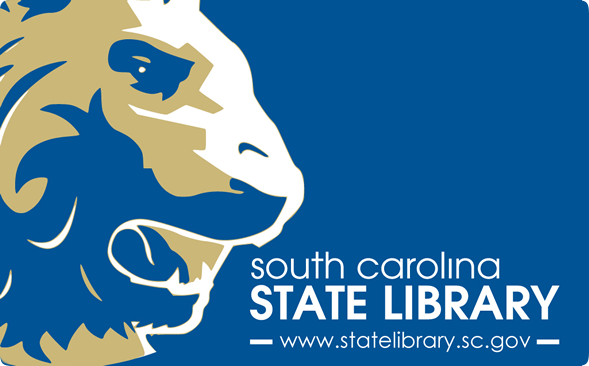As South Carolina universities gear up for the new academic year, campuses come alive with the buzz of returning students and new faces alike. The transition from summer heat to the start of fall semester is marked by orientation sessions, campus events and sports, and the familiar rhythm of classes resuming.

Go back to school with our timelines that trace the history of South Carolina universities and reveal a tapestry of educational evolution, from the establishment of the state's first public college in 1801 to the modern-day institutions that shape our state.

The University of South Carolina
- 1801 - The Palmetto State established South Carolina College — the University of South Carolina's precursor — on Dec. 19, 1801, as part of an effort to unite South Carolinians in the wake of the American Revolution. The state's leaders saw the new college as a way to promote "the good order and harmony" of the state. It was also a part of the Southern public college movement spurred by Thomas Jefferson.
- 1805-1809 - The campus grew around the Horseshoe's quadrangle. In 1805, the first building — Rutledge — was completed. For a time, Rutledge served as classroom, lab, library, chapel, and student and faculty housing until DeSaussure was completed in 1809.
- 1855-1861 - In 1855, a fire gutted Rutledge and five years later South Carolina's secession from the Union unleashed the devastation of war. Without students, the college closed in 1861 and, in ensuing decades, struggled to regain its former status.
- 1866-1880 - State leaders revived the institution in 1866 as the University of South Carolina with ambitious plans for a diverse university that included the first African-Americans to serve on the board of trustees (1868) and the first African-American students (1873). The University of South Carolina became the only Southern state university to admit and grant degrees to African-American students during the Reconstruction era. In 1877, state leaders closed the university and reopened it in 1880 as an all-white agricultural college.
- 1893-1899 - In 1893 the state legislature mandated that women be allowed to enroll. The first female student — Frances Guignard Gibbes — was admitted on September 24, 1895. The university's first female graduate was Mattie Jean Adams, who was awarded a bachelor of arts degree in 1898. While women were allowed to attend, they were not yet permitted to live on campus and had to live with family members. The first Garnet and Black yearbook was published in 1899.
- 1917 - In the early decades of the 20th century, South Carolina made strides toward becoming a comprehensive university. In 1917 it became the first state-supported college or university in South Carolina to earn regional accreditation. The Great Depression temporarily stalled progress, but the outbreak of World War II brought U.S. Navy training programs to campus. Enrollment more than doubled in the post war era as veterans took advantage of the G.I. Bill. In the 1920s, women reached 25 percent of the student population.
- 1924 - During the war years, female students were allowed to live in traditionally male dormitories. As male students began to return to campus, the university built the first residence hall for female students on campus, later named Wade Hampton College.
- 1950s-1960s - In the 1950s, the university extended its presence beyond Columbia with the establishment of campuses in communities across South Carolina. In the 1960s, the university began to focus on research, recruiting national-caliber faculty, and adding new schools and colleges.
- 1970s - The university experienced explosive growth as the baby boom generation entered college. Enrollment stood at 5,660 in 1960, but by 1979 had reached nearly 26,000 students on the Columbia campus alone. During the era, the university put new emphasis on research, and introduced innovative degree programs as well as a number of new schools and colleges. The original campus, which contains the Horseshoe, was included in the National Register of Historic Places in 1970.
- 1972-1977 - The state's first school of public health — later named the Arnold School of Public Health — opens on campus in 1975. A renovation program that began in 1972 restored the 19th-century Horseshoe buildings and created a home for the South Carolina Honors College, which was established in 1977. Thomas Cooper Library was built in 1976.
- 1980s-1990s - A concerted drive to achieve national and international recognition brought the university into the 21st century. World leaders such as UN Secretary-General Kurt Waldheim, President Ronald Reagan, Prime Minister Malcolm Fraser and other foreign dignitaries such as Pope John Paul II visited.
- 2001 - In 2001, the University of South Carolina observed its bicentennial celebration.
- 2004 - The university's first LEED-certified building, the Green Quad opened. A sustainable living/learning community, the Green Quad includes three residences and a Living/Learning Center in the heart of the quadrangle.
- 2002-2008 - The university's Colonial Life Arena opened in 2002. The Norman J. Arnold Public Health Research Center opened in 2006. The university established the Innovista "innovation district" to develop four key research strengths — biomedicine, nanotechnology, environmental science and alternative fuels.
- 2009-2012 - A series of athletics facility improvements delivered Founders Park baseball stadium (2009), the Dodie Anderson Academic Enrichment Center (2010) and in 2012 the Rice Athletics Center, Gamecock Park and Tennis Center.
- 2013 - The university's online Palmetto College was founded for students seeking to complete bachelor’s or graduate degree programs through the system’s four degree-granting campuses.
- 2016 - 650 Lincoln, the university's first public/private partnership residence hall, opens.

The Clemson Story
Clemson was founded in 1889 through a bequest from Thomas Green Clemson, a Philadelphia-born, European-educated engineer, musician, and artist who married John C. Calhoun's daughter, Anna Maria, and eventually settled at her family plantation in South Carolina. A longtime advocate for an agricultural college in the Upstate, Clemson left his home and fortune to the state of South Carolina to create the institution that bears his name.
In November 1889, Gov. John Peter Richardson signed a bill accepting Clemson’s gift, which established the Clemson Agricultural College and made its trustees custodians of Morrill Act and Hatch Act funds, federally provided for agricultural education and research purposes by federal legislative acts.
Initially an all-male, all-white military school, Clemson Agricultural College opened in July 1893 with 446 students. Clemson became a coeducational, civilian institution in 1955. In 1963, with the admission of Harvey Gantt, Clemson became the first traditionally white institution in South Carolina to desegregate since Reconstruction. With academic offerings and research pursuits, the institution became Clemson University in 1964.

Coastal Carolina University
- 1954 - On the evening of July 23, 1954, a group of citizens met in the Horry County Memorial Libraryto discuss a daring proposal – the creation of a local college. The group soon becomes a nonprofit organization, the Coastal Educational Foundation, Inc. Edward Woodhouse begins his service as director of Coastal Carolina Junior College, taking the helm just nine days prior to the first day of classes on Sept. 20, 1954, when Coastal Carolina Junior College opened as a branch of the College of Charleston. Fifty-three students are enrolled, taught by a handful of part-time faculty, with classes meeting after hours in Conway High School.
- 1958 - Coastal Carolina Junior College becomes independent when the College of Charleston discontinues its extension program. Horry County voters approve a referendum that raises taxes by three mills to provide funding for the college.
- 1959 - The South Carolina General Assembly creates the Horry County Higher EducationCommission, a government regulatory agency to oversee use of Coastal Carolina's county taxmoney. The college's first five graduates are awarded associate's degrees on May 27, 1959.
- 1960 - The Horry County Higher Education Commission is responsible for a contract that establishes Coastal Carolina Regional Campus of the University of South Carolina, effective fall 1960. The college was soon to become USC Coastal Carolina College, beginning a 33-year relationship with the University of South Carolina. George C. Rogers, who served as administrative director of Coastal Carolina Junior College from 1955 until 1960, announces his retirement. William C. Casper is named director.
- 1961 - Members of the Horry County Higher Education Commission and Coastal Educational Foundation, Inc., agree it is time to move to a campus suitable for institutional growth. They select the present site of the University, most of which was donated by Burroughs Timber Company and International Paper Company. A major fundraising drive raises $317,000 for construction. Coastal’s first intercollegiate athletics contest is held, a basketball game between Coastal and USC Florence.
- 1962 - Ground is broken for the campus and less than a year later Coastal Carolina's 110 students move into the first campus building, now known as the Edward M. Singleton Building.

College of Charleston
Founded in 1770, the College of Charleston is the oldest educational institution south of Virginia, and the 13th oldest in the United States. The College of Charleston has so much history - from its charter on March 19, 1785, to its 250th anniversary celebration in 2020. Explore the timeline to see the many milestones of our storied university.
- 1770 - College of Charleston founded.
- 1785 - College of Charleston chartered.
- 1790 - Classes begin at the College of Charleston.
- 1794 - First graduating class (six students).
- 1828 - The cornerstone is laid for Randolph Hall. Randolph Hall is the College’s main academic building.
- 1837 - First municipal college in the United States. College of Charleston becomes the first municipal college in the United States.
- 1855 - College of Charleston's First Library. Construction begins on the first campus library (now known as Towell Library).
- 1857 - The Cistern is constructed. The Cistern is constructed as a reservoir to provide water for fighting fires in the days before the city installed a water system. It was later filled in and covered with grass. Today a stage is built over the Cistern to seat the graduating class for May Commencement.
- 1864 - Under Siege. Charleston is under siege during the Civil War. College of Charleston closes.
- 1866 - Classes resume.
- 1900 - Introduction of bachelor of science degree. President Harrison Randolph introduces the bachelor of science degree.
- 1917 - Women are admitted to the College.
- 1922 - College of Charleston's 1st Female Graduate. Pierrine St. Claire Smith Byrd becomes the first female graduate.
- 1967 - First Black Students. College of Charleston admits its first black students.
- 1970 - Incorporation College of Charleston is incorporated into the S.C. State College System.
- 1971 - First Black Graduate. Robert Scott Small Library opens (holding capacity of 500,000 volumes). Eddie Ganaway is the first African American to graduate from the College of Charleston.
- 1972 - First graduate program established.
- 1975 - Grice Marine Laboratory. The College completes the Grice Marine Laboratory on James Island; the laboratory serves as the center for the marine biology curriculum.
- 1978 - Simons Center for the Arts. The Simons Center for the Arts, home to the Halsey Institute of Contemporary Art and the School of the Arts, opens.
- 1985 - Avery Research Center The Avery Research Center for African American History and Culture opens.
- 1990 - NASA.College of Charleston is one of six colleges chosen to serve as a space research facility and partner with NASA.
- 1992 - The Graduate School. College of Charleston formally establishes the Graduate School of the College of Charleston.
- 2005 - Addlestone Library | Beatty Center. The College opens two new facilities: the Marlene and Nathan Addlestone Library, with a holding capacity of 1 million volumes, and the Beatty Center, home to the School of Business and Economics.
- 2007 - New Residence Halls. The College opens two new residence halls, the George Street Apartment Community and the Liberty Street Residence Hall. The complex also contains the Liberty Street Fresh Food Company dining hall.
- 2008 - The Carolina First Arena. The Carolina First Arena, home to men’s and women’s basketball and volleyball, opens.
- 2009 - The Halsey. The Halsey Institute of Contemporary Art opens in its new location on the first floor of The Marion and Wayland H. Cato Jr. Center for the Arts.
- 2020 - 250 Years. The College of Charleston celebrates its 250th anniversary


